Ongoing Projects |

|
Miniaturized gyroscopes based on piezoresistive nano-gauges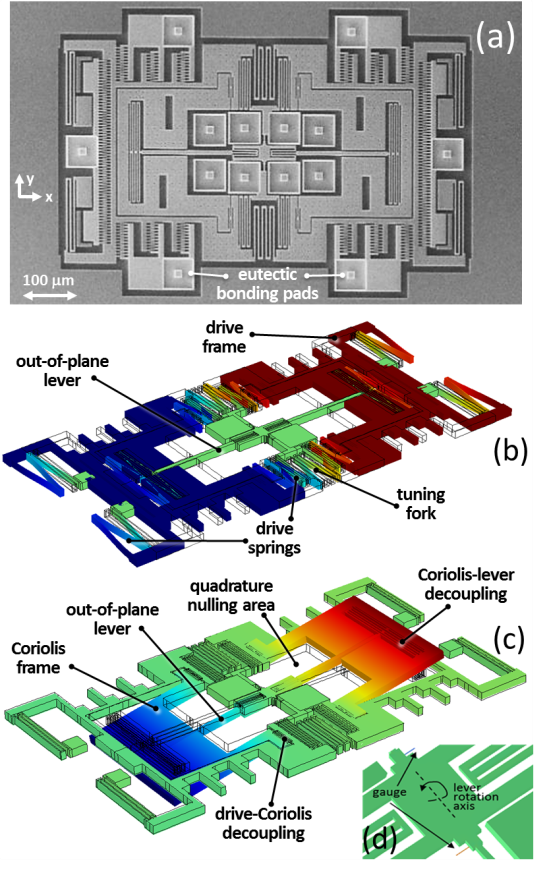 The research aims
at
developing gyroscopes based on an innovative sensing principle: while
most of available consumer MEMS gyroscopes rely on capacitive detection
of a displacement induced by the Coriolis force, in this research we
use piezoresistive NEMS gauges as sensing elements. The research aims
at
developing gyroscopes based on an innovative sensing principle: while
most of available consumer MEMS gyroscopes rely on capacitive detection
of a displacement induced by the Coriolis force, in this research we
use piezoresistive NEMS gauges as sensing elements.Foreseen advantages are a lower thermomechanical noise even at moderate pressure (e.g. the mbar range), due to the absence of squeeze-film damping in the sense frame, and a large output signal due to the large gauge factor of the heavily doped gauges. The research will involve reliability and linearity analysis on the NEMS beams, optimized 3-axis gyroscopes design, development of amplitude controlled drive loop and sense electronics, and gyroscopes characterization and testing. The research is developed within the frame of the NIRVANA FP-7 European Project. High-performance MEMS magnetometers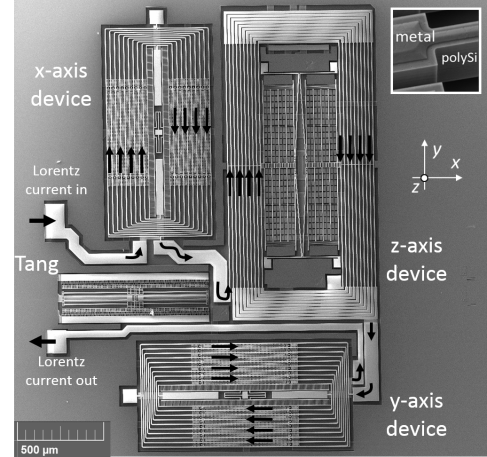 The research
involves an innovative design and an innovative operating principle for
Lorentz-force-based MEMS magnetometers. The research
involves an innovative design and an innovative operating principle for
Lorentz-force-based MEMS magnetometers.Following detailed theoretical analysis, magnetometers can be operated off-resonance by few hundred Hz, instead of the conventional resonant operation. This working principle gives improved stability, lower achievable thermomechanical noise at large bandwidths, at the cost of a lower output signal. To recover the decrease in the output signal, suitable structures using multi-loop current re-circulation will be designed using standard, cheap processes. Electronics for characterization and testing will be developed in parallel, targeting a balance between the device thermomechanical noise and the electronic noise. The final goal is the demonstration of an all-MEMS 3-axis magnetometer with competitive performance with respect to other technologies (e.g. Hall, AMR…). The research is developed within the frame of the Lab4MEMS ENIAC project. Reliability and dissipation phenomena in MEMS It is known that
MEMS involve failure modes both different from standard integrated
circuit and different from macro-scale mechanical failure modes. The
behavior of the structural materials used in MEMS, as well as the
behavior of forces at the micro and nano scale can be quite different
from what observed for the same material or the same surfaces at the
macro-scale. It is known that
MEMS involve failure modes both different from standard integrated
circuit and different from macro-scale mechanical failure modes. The
behavior of the structural materials used in MEMS, as well as the
behavior of forces at the micro and nano scale can be quite different
from what observed for the same material or the same surfaces at the
macro-scale.This research involves the design of test structures for reliability measurements, like strength, fracture, fatigue and adhesion force characterization at the micro and nano scale. The research also involves the characterization of dissipative phenomena in MEMS as a function of the geometry of the device and of the environmental conditions, in particular the pressure. The outcome of the research is a contribution to the scientific knowledge in these fields, as well as the realization of theoretical and empirical models for the predictions of the observed phenomena. MEMS ultrasonic transducers The research
involves the design and characterization of different micromachined
ultrasonic transducers (MUTs), either based on capacitive (CMUT) or
piezoelectric transduction (PMUT). The research
involves the design and characterization of different micromachined
ultrasonic transducers (MUTs), either based on capacitive (CMUT) or
piezoelectric transduction (PMUT).The research also includes the development of characterization electronics to validate the design models, to operate the transducers, and to characterize the emission profile and directionality of the operated MUTs. Different membrane designs and different materials will be tested. Foreseen applications are in the field of gas sensing, 3D position identification, gesture recognition. The research is developed in collaboration with VTT, Technical Research Center of Finland. 3-axis Frequency Modulated gyroscopes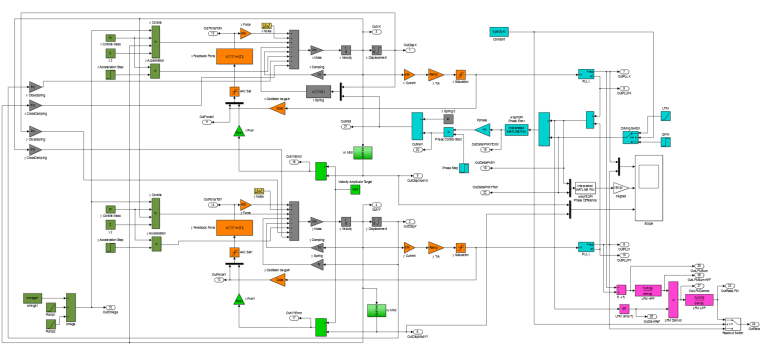 The research
involves the system-level study and the identification of an optimum
architecture for frequency-modulated (FM) gyroscopes, based on the
Coriolis force. In contrast to amplitude-modulated (AM) gyroscopes,
where the Coriolis effect is responsible for the displacement of the
gyroscope sense mode while the drive mode only is kept in oscillation,
in FM gyroscopes the Coriolis force induces a shift in the resonance
frequencies of a gyroscope whose both axes are kept in oscillation with
the same velocity. The research
involves the system-level study and the identification of an optimum
architecture for frequency-modulated (FM) gyroscopes, based on the
Coriolis force. In contrast to amplitude-modulated (AM) gyroscopes,
where the Coriolis effect is responsible for the displacement of the
gyroscope sense mode while the drive mode only is kept in oscillation,
in FM gyroscopes the Coriolis force induces a shift in the resonance
frequencies of a gyroscope whose both axes are kept in oscillation with
the same velocity.Challenges are in the design of the sensors for in-plane rate detection, due to the practical impossibility to design out-of-plane axisymmetric structures. Challenges are also in the definition of the optimum architecture for the oscillators and readout electronics, aiming simultaneously at low-power dissipation, good white noise performance and long-term stability. |
|
Past Projects |
|
TFD Color Sensor In
2008 SanDLab conceived the idea of a novel color sensor: The Transverse
Field Detector (TFD). This new device can be used to measure the color
of incident light without any color filter array. The working principle
is based on the capability of this device to collect carriers generated
at different depths at different superficial junctions by means of
suitable transverse electric fields. Due to the differences in the
semiconductor light absorption coefficient at different wavelengths,
this device can thus perform color separation. In
2008 SanDLab conceived the idea of a novel color sensor: The Transverse
Field Detector (TFD). This new device can be used to measure the color
of incident light without any color filter array. The working principle
is based on the capability of this device to collect carriers generated
at different depths at different superficial junctions by means of
suitable transverse electric fields. Due to the differences in the
semiconductor light absorption coefficient at different wavelengths,
this device can thus perform color separation. The transverse components of the electric fields are generated inside the semiconductor depleted region by a suitable bias of the superficial collecting junctions. This new type of color detector takes advantages from CMOS compatibility and technology scaling. The TFD is suitable to be integrated in a pixel array for imaging purposes. A unique feature of the TFD is the possibility to real-time change the spectral responses, either to adapt the sensor color space to the sce to be acquired, or to perform multi-spectral acquisition, or to perform combined visible-infrared detection. Application field: Consumer market cameras, Multispectral analysis. MEMS Accelerometers beyond the pull-in limit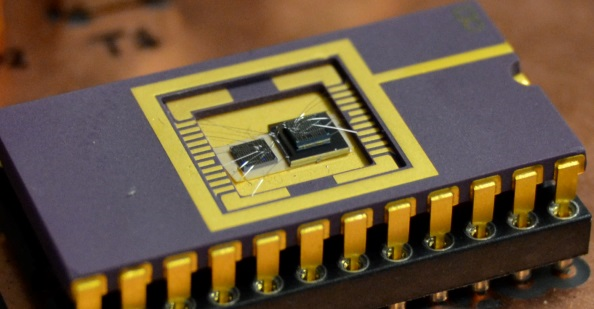 The ongoing
transition between Micro- and Nano- electro mechanical
systems (MEMS/NEMS) requires a solution to the problem of pull-in
instability and on the whole, to the relevance of the electrostatic
readout forces with respect to other forces to be sensed (inertial,
magnetic,...).It is the case for instance of MEMS capacitive
accelerometers, where a movable seismic mass forms with suitably
designed electrodes fixed to the substrate a set of variable parallel
plates capacitors. In these devices the sensitivity, defined as the
capacitance variation per unit of external acceleration, is reversely
proportional to both the gap between the parallel plates and the
elastic stiffness of the device. Nevertheless, shrinking of these
dimensions is ultimately limited by the fact that the pull-in voltage
is itself proportional to the same quantities. As a consequence, the
sensitivity cannot be increased beyond a certain point. This limits the
possibilities of reducing the device overall area. The ongoing
transition between Micro- and Nano- electro mechanical
systems (MEMS/NEMS) requires a solution to the problem of pull-in
instability and on the whole, to the relevance of the electrostatic
readout forces with respect to other forces to be sensed (inertial,
magnetic,...).It is the case for instance of MEMS capacitive
accelerometers, where a movable seismic mass forms with suitably
designed electrodes fixed to the substrate a set of variable parallel
plates capacitors. In these devices the sensitivity, defined as the
capacitance variation per unit of external acceleration, is reversely
proportional to both the gap between the parallel plates and the
elastic stiffness of the device. Nevertheless, shrinking of these
dimensions is ultimately limited by the fact that the pull-in voltage
is itself proportional to the same quantities. As a consequence, the
sensitivity cannot be increased beyond a certain point. This limits the
possibilities of reducing the device overall area. SanDLab is studying new strategies to overcome the pull-in limit issue, searching for smart solutions enabling the cost reduction of MEMS devices fabrication. Among these strategies, frequency modulated (FM, or resonant) accelerometers are developed, together with their integrated readout electronics. Application field: consumer market products. |
 |
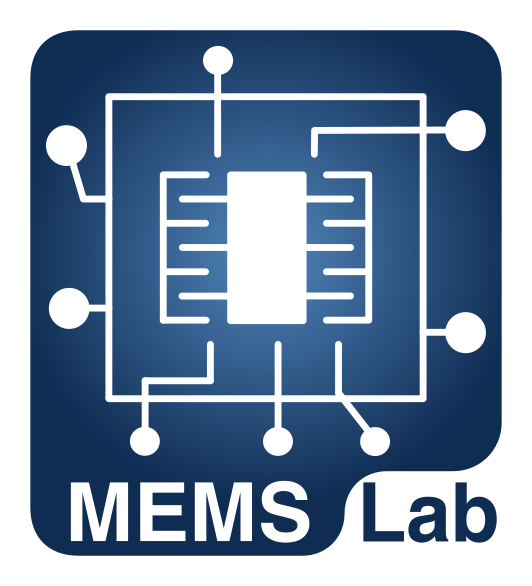 | Laboratory of MEMS and Microsensors |


